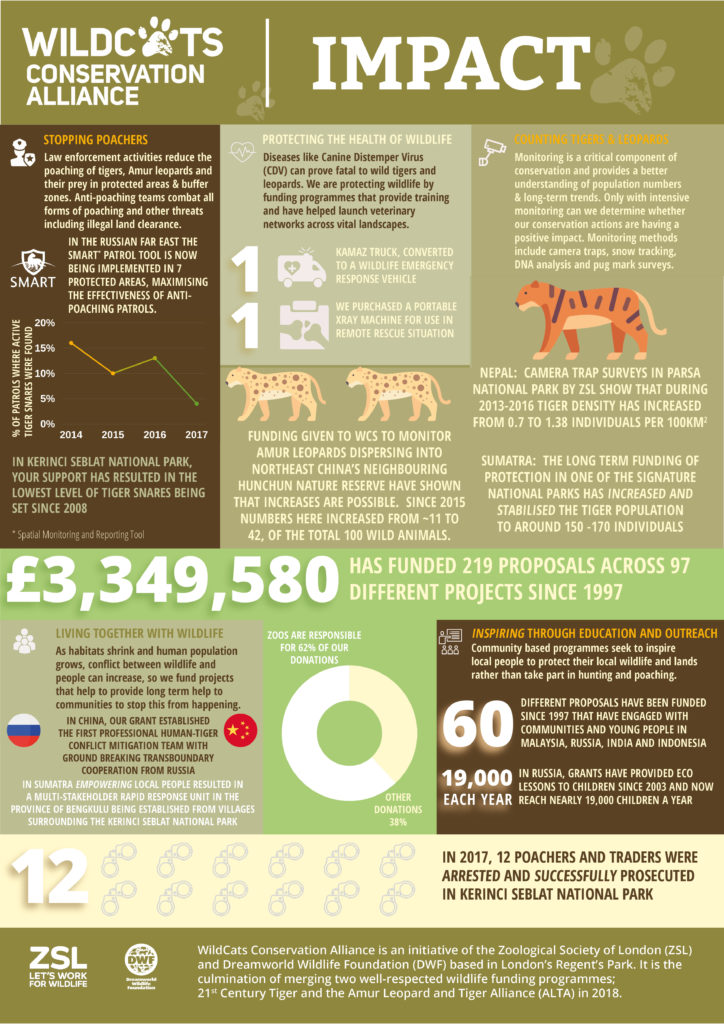All WildCats Conservation Alliance projects are subject to rigorous scrutiny to ensure they are having maximum conservation impact. In many cases it is not easy to demonstrate impact, especially when it comes to the art of population monitoring. We produced a document for our funders that illustrates the various ways that our projects have succeeded in the last year. We struggled to fit in everything we wanted to with limited space; but here is what we have achieved together:
Working collaboratively is key to safeguarding wild tigers and Amur leopards for future generations. We are a unique initiative between ZSL and DWF and believe, that work together with other world zoos channelling money to respected conservation organisations for wild tiger and Amur leopard conservation projects.
The Alliance provides a win-win scenario for both zoo funders and field conservation projects. Projects are carefully selected after a rigorous independent review process and follow a number of key conservation themes. Anti-Poaching is one of our key priority areas, in Sumatra we support Fauna & Flora International (FFI), here is a small case study so you can learn more about the work.
CASE STUDY | Wild Tiger Conservation – Stopping poachers
Kerinci Seblat National Park, Sumatra is patrolled by six anti-poaching units made up of National Park staff, coordinated by Fauna & Flora International (FFI).
Wildlife crime investigations are carried out in collaboration with the local district police under a cooperative agreement since 2015. The aim is to identify individuals posing a threat to tigers in the project landscape, in particular syndicate ‘kingpins’, their networks and trade routes and secure evidence. The black market in wildlife is constantly monitored to identify and counter any resurgence in trade-driven poaching.
Intelligence-led foot patrols respond to tip-offs from a network of local informants and from ongoing wild crime investigations. Patrols are planned, recorded and their data analysed using SMART (Spatial Monitoring & Recording Tool) techniques to ensure best practice.
Since funding for this project began in 2001, tiger numbers have more than doubled according to recent data. A total of 53 poachers and traders have been prosecuted and more recently, the length of sentences have increased. 2016 and 2017 have seen a decline in the number of tiger snares detected in the core area of the Park to levels last seen in 2008 as a result of the arrest and successful prosecution of 12 poachers and traders.
__________________________________
Support our work this Global Tiger Day, text to donate (UK only) ‘TIGR96 £5’ to 70070 and 100% will make its way to frontline wild tiger conservation! Non-UK please visit our donation page!


